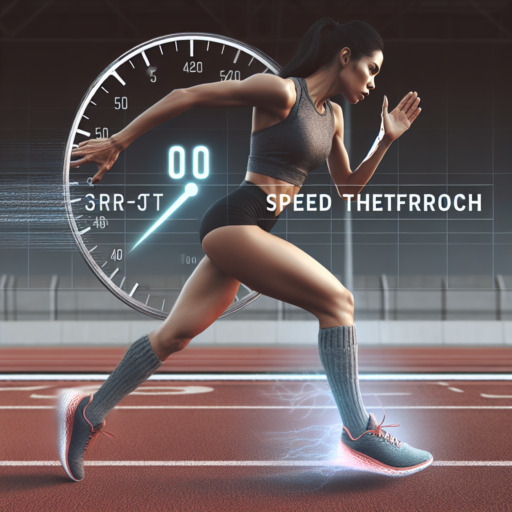What is Step Accuracy and Why is it Important?
Step accuracy refers to the precision with which a fitness tracker or pedometer measures the number of steps taken by an individual. It’s a crucial metric in the world of wearable technology, where the goal is to provide users with detailed and accurate data about their physical activities. But why is step accuracy so important? At its core, step accuracy is vital because it directly influences the reliability of the data provided by activity trackers. This data, in turn, informs various aspects of a user’s health and fitness routine.
One key reason step accuracy matters is its impact on goal setting and tracking. When users have access to precise numbers regarding their daily movements, they can set realistic fitness goals and monitor their progress accurately. This helps in maintaining motivation and ensuring that individuals can make tangible improvements over time. Without accurate step counting, it becomes challenging to gauge true physical activity levels, potentially leading to either underestimation or overestimation of one’s efforts and achievements.
Moreover, step accuracy plays a pivotal role in calibrating calorie burn estimates. Most fitness trackers use the number of steps taken as a fundamental input to estimate the calories burned during activity. If the step count is inaccurate, then the calorie estimates, which many people rely on for weight management and nutritional planning, will also be off. Therefore, ensuring high step accuracy is not just about tracking how much one walks; it’s about creating a reliable foundation for broader health and fitness insights.
How Step Accuracy Can Enhance Your Fitness Journey
Tracking steps accurately has become a crucial aspect of maintaining a comprehensive fitness regime. Many individuals may not realize the importance of precise step counting, but its relevance cannot be overstated. Every step counted accurately offers a better picture of your daily activity, enabling a more tailored and effective fitness plan. Accuracy in step counting not only ensures that you are meeting your daily targets but also prevents the risk of overestimating your activity levels, which can lead to complacency in your fitness journey.
Utilizing advanced wearable technology is one of the best ways to ensure the accuracy of your step count. Modern fitness trackers and smartwatches come equipped with sophisticated sensors that can more accurately measure each step. This precision allows for a better assessment of your physical activity and helps in setting realistic fitness goals. Moreover, many of these devices also offer insights into other aspects of health, such as heart rate and calories burned, providing a holistic view of your fitness.
Incorporating activities that increase step count can also play a significant role in enhancing your fitness journey. Simple changes, like taking the stairs instead of the elevator or going for short, brisk walks during breaks, can significantly contribute to your daily step count. Over time, these small adjustments can lead to substantial improvements in your fitness level, endurance, and overall health. Paying attention to step accuracy ensures that every effort is counted and contributes towards reaching your fitness goals.
No se han encontrado productos.
Top 5 Ways to Improve Your Device’s Step Counting Accuracy
Ensuring your device accurately counts your steps is critical for monitoring your daily activity levels and meeting your fitness goals. Here we’ll explore proven strategies to enhance the step counting accuracy of your smartphone or fitness tracker.
Regularly Update Your Device’s Software
Manufacturers frequently release software updates that enhance the functionality and accuracy of step counting algorithms. By keeping your device updated, you ensure that you’re benefiting from the latest advancements and corrections. To check for updates, navigate to the settings menu of your device or accompanying app and select the update option.
Correctly Set Your Step Length
One common reason for inaccurate step counts is an incorrect step length setting. Most devices allow users to set their step length manually in the app settings. Measure your average step length by walking a known distance and dividing it by the number of steps taken. Entering this measurement into your device can significantly improve accuracy.
Wear Your Device Correctly
The position of your device can greatly affect its ability to count steps accurately. Ensure the device is snugly fitted to your body, as recommended by the manufacturer—typically on your wrist or clipped to your waistband. Devices worn too loosely tend to register false steps, while those too tight might not count all your steps.
Comparing Step Accuracy Across Popular Fitness Trackers
When considering the upgrade or purchase of a fitness tracker, many enthusiasts lean heavily toward the accuracy of the device, particularly when it comes to counting steps. This metric, often considered the foundation of tracking physical activity, varies significantly among popular fitness trackers. The variation in step counts can be attributed to the algorithms and sensors each brand utilizes to distinguish between a step and other bodily movements.
Accuracy in step counting is not just about the highest number of steps recorded. It’s about how closely the tracker’s readings mirror the actual steps taken. Some fitness trackers might overestimate steps during a day filled with non-step-related activities, while others might underestimate steps during rigorous outdoor activities. Therefore, understanding the context in which these devices perform best can help users align their choice with their primary types of physical activity.
Dedicated fitness enthusiasts often participate in forums and conduct side-by-side comparisons to shed light on the discrepancies between brands. These practical assessments include wearing multiple devices for the same period or specific activities like walking, running, or climbing stairs. Preliminary findings typically reveal that no single fitness tracker is universally accurate for every type of movement, suggesting that the choice of a device may come down to the specific needs and activity patterns of the user.
The Science Behind Measuring Steps: Understanding the Technology
In the age of wearable technology, understanding how our steps are measured and the technology behind it becomes increasingly relevant. At the heart of this process is a small but powerful device known as an accelerometer. This piece of technology is capable of detecting movement in any direction, which is fundamental in the calculation of steps taken by an individual. By analyzing changes in speed and direction, accelerometers provide raw data that, through sophisticated algorithms, get translated into the steps counted on your device.
However, the journey from raw data to step counts is not entirely straightforward. Advanced algorithms play a crucial role in distinguishing between actual steps and other movements to avoid overcounting. For instance, if you’re simply moving your arm while seated, the technology needs to recognize that these movements are not steps. This differentiation is achieved through pattern recognition in the accelerometer’s data, a testament to the complexity and refinement of the software running on modern fitness trackers and smartphones.
Moreover, calibration also plays a significant part in ensuring the accuracy of step counts. When you first set up your device, it learns about your stride length and walking style, which helps in improving the precision of step measurement over time. This personalized calibration process, along with periodic updates to the device’s software, ensures that the step counting technology adapts to your unique walking pattern and evolves with advancements in the field.
Real User Experiences: How Step Accuracy Affects Fitness Goals
Tracking fitness progress often relies heavily on the accuracy of step count data. Real user experiences highlight the significance of this aspect in achieving fitness goals. Counting steps precisely is not just about hitting a daily target; it’s about the motivation and trust in the process that evolves from accurate data. Users depending on this data for pacing their daily exercise report feeling more motivated and inclined to stick to their routines when they trust their fitness trackers to report precise steps.
One key factor that impacts user trust and motivation is the feedback loop created by accurately tracking steps. This loop encourages users to push their limits comfortably, knowing they have reliable data to back their efforts. Inaccurate step counts, conversely, can lead to discouragement and ultimately harm the user’s pursuit of health goals. Real-life anecdotes reinforce that when users notice discrepancies in step count, it often leads to questioning the overall efficacy of their fitness plan.
Moreover, the psychological impact of seeing tangible progress cannot be overstated. For many, the quantitative measure of steps taken is a direct indicator of commitment to fitness goals. Real users report that the satisfaction of meeting or exceeding step goals not only boosts their day’s morale but also solidifies their long-term commitment to maintaining an active lifestyle. Thus, the accuracy of step counts directly correlates with sustained motivation and adherence to fitness objectives.
Step Accuracy in Smartphones vs. Wearables: A Detailed Analysis
When it comes to tracking physical activity, the accuracy of step counting is a critical factor for many users, leading to a growing interest in the comparison between smartphones and wearables. Each device type employs unique technologies and algorithms to monitor movements, making their accuracy levels a topic worth exploring. This detailed analysis dives into the specifics of how smartphones and wearables handle step tracking, highlighting differences that users might not be aware of.
Smartphones, widely accessible and often a primary choice for casual fitness tracking, depend heavily on built-in accelerometers to monitor steps. The placement of the smartphone—whether it’s in a hand, pocket, or bag—can significantly influence the accuracy of the step count. Various software improvements and sensor enhancements have aimed to mitigate these discrepancies, striving for greater precision in diverse usage scenarios.
On the other hand, wearables, such as fitness bands and smartwatches, are specifically designed for tracking physical activity. Worn directly on the body, they offer constant contact and, typically, a more stable set of data for analyzing steps. Advanced metrics collected from multiple sensors allow for a nuanced understanding of user movement, potentially leading to a higher step counting accuracy compared to smartphones.
Common Misconceptions About Step Counting and How to Overcome Them
Step counting has become a popular way to track physical activity, aiming to improve overall health and fitness. However, there are several misconceptions surrounding this practice that can hinder progress and motivation. Understanding and overcoming these can lead to a more successful and enjoyable fitness journey.
Misconception 1: «All Steps are Equal»
One common belief is that all steps are equal, regardless of intensity or context. This simplification ignores the fact that steps taken at a brisk pace or uphill work the body harder than those taken on a flat surface at a leisurely pace. To overcome this, consider the context of your steps and aim to incorporate more challenging terrains or increase your pace to boost the effectiveness of your step count.
Misconception 2: «10,000 Steps is a Magical Number»
Another widespread misconception is the notion that reaching 10,000 steps daily is the ultimate goal that guarantees health benefits. While this number is a good target for many, it’s important to remember that individual fitness goals and capabilities vary. For some, a lower step count with higher intensity activities may be more beneficial, while others may require more steps. Listen to your body and adjust your goals accordingly to find what works best for you.
Overcoming these misconceptions about step counting can pave the way for a more tailored and effective approach to physical activity. By focusing on the quality and context of your steps, rather than just the quantity, you can maximize your health benefits and enjoy a more fulfilling fitness journey.
Maximizing Your Steps: Tips for Accurate Step Tracking
Keeping an accurate count of your steps each day can play a crucial role in tracking your physical activity levels and achieving your fitness goals. With the rise of wearable technology, it’s now easier than ever to monitor your progress. However, ensuring the data’s accuracy can sometimes be challenging. Here, we dive into some essential tips for accurate step tracking to help maximize your daily step count and get the most out of your walking routine.
Choose the Right Position for Your Device
One key factor in achieving accurate step tracking is where you place your tracking device. Whether you use a smartphone or a wearable, the position can significantly impact its counting accuracy. For wrist-worn devices, ensure they’re snug but not too tight. For smartphones, carrying them in a stable position, like a pocket close to your body’s center of gravity, can help improve accuracy. Experimenting with different positions and using your device’s guidelines can make a huge difference in the precision of your step count.
Maintain Regular Calibration
Regularly calibrating your step tracker is vital for enhancing its accuracy. Most devices offer a calibration feature that considers your stride length and other personal metrics. Take the time to set these up correctly, and recalibrate after any significant changes in your walking habits or physical condition. By maintaining your device’s calibration, you’re ensuring that each step is counted as accurately as possible, allowing for a more precise measure of your daily activity levels.
Understand the Limitations of Your Tracker
Awareness of the limitations inherent to your step-tracking device can also aid in maximizing its accuracy. No tracker is perfect; environmental factors, movement types, and even the way you walk can influence the count. Recognizing these factors and adjusting your expectations accordingly can help you better interpret the data your tracker provides. Sometimes, manual adjustments or using a secondary method for cross-verification can further enhance your understanding of your physical activity patterns.
Future of Step Tracking: Innovations and Trends in Accuracy Improvement
The arena of step tracking is undergoing an unprecedented transformation, fuelled by innovations aimed at enhancing the accuracy of devices. Key to this evolution is the integration of advanced sensors and algorithms that not only count steps more precisely but also differentiate between types of physical activity. This development signifies a leap forward from the rudimentary pedometer to sophisticated smart devices that offer a holistic view of an individual’s mobility.
Another noteworthy trend is the application of artificial intelligence (AI) and machine learning in refining the algorithms that step trackers use. These technologies enable devices to learn from a vast dataset of user activities, improving their ability to accurately track steps amidst a variety of movement patterns. Whether it’s a leisurely stroll, a brisk walk, or a vigorous run, these smart devices are becoming increasingly adept at recognizing and recording each activity with remarkable precision.
Beyond hardware and software enhancements, there’s a growing emphasis on personalization in step tracking. Future devices are expected to tailor their tracking and feedback mechanisms to an individual’s unique walking or running biomechanics. This bespoke approach not only promises greater accuracy in step counting but also offers insights into improving one’s gait and reducing the risk of injury.




